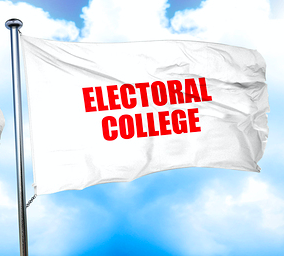Critics of the Electoral College have taken aim at the “Winner-Take-All” rules used by most states to allocate presidential electors.
The change demanded by these critics, however — abolishing or nullifying the Electoral College — would radically alter the nature of our federal republic and precipitate an electoral crisis. It also ignores far easier options for dealing with concerns about Winner-Take-All.
State Winner-Take-All laws give all the electoral votes in that state to the candidate who receives the most votes there, while the runner-up candidate receives none.
The benefits of Winner-Take-All are clear — it maximizes a state’s influence in the Electoral College vote.
The candidate who wins, say, California’s 55 electoral votes is more than 20 percent of the way toward the 270 needed to become president. Splitting electors between the candidates — a proportional system in California might have given Clinton 37 electors and Trump 18 electors in 2016 — diminishes a state’s influence on the final outcome.
The main complaint about Winner-Take-All is that some states are viewed as “safe” and therefore don’t get inundated with television ads, slick mailers, and visits by candidates and surrogates.
Because New York is widely viewed as “safe” for the Democratic candidate, Republican presidential candidates don’t generally visit the state to campaign (though they do come to fundraise), and Democrats likewise don’t invest much in states that are thought to be likely wins for the Republican.
Another complaint is that it is somehow unfair that the losing candidate’s voters get no representation from under Winner-Take-All — Joe Biden will receive about 41 percent of the vote in Missouri this year, but all 10 of the electors representing the state will be pledged to support Trump.
There’s no requirement that states use Winner-Take-All rules. Only a handful of states did so originally, though by 1828 it had been adopted by nearly every state. States looking for more attention from presidential campaigns can easily adopt an alternative to Winner-Take-All that still respects the will of their voters.
For example, states could follow the practice of Maine and Nebraska, which award one elector to the winner of each congressional district and the two remaining electors to the statewide winner.
States could also do what many states did in the early years of the republic by drawing special electoral districts for all of their electors Another option would be proportional allocation, splitting a state’s electoral votes based on the percentage of the statewide vote each candidate received.
States could also adopt a threshold system and allocate one or more electoral votes to the second-place candidate if he or she received more than a specified percentage of the statewide vote.
By setting the threshold close to the average percentage achieved by past second-place candidates, it would incentivize both the favored and the underdog candidate to campaign in the state.
For example, a state like Tennessee, where the Democrat in recent election years typically received around 40 percent of the vote, could award three of its 11 electors to the runner-up if they won 40 percent of the vote.
Those who criticize Winner-Take-All laws often call to abolish the Electoral College or to nullify it through the National Popular Vote interstate compact (NPV). Neither radical proposal is necessary, and neither stands to reach fruition any time soon.
State lawmakers concerned about their Winner-Take-All law should consider more targeted solutions that can be passed and in effect by the 2024 presidential election.
They should reject calls for wholesale change that are as unwise as they are unnecessary.

